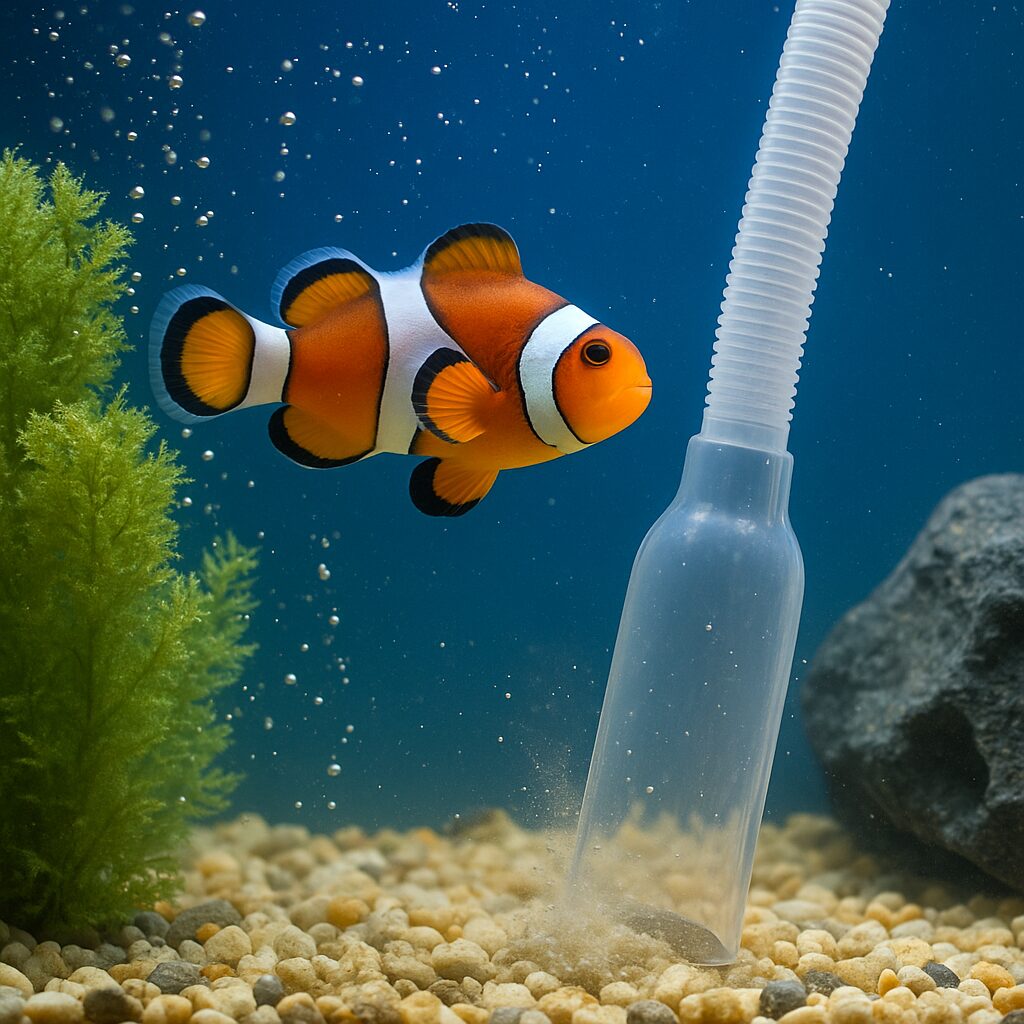No matter how beautiful your aquascape or how fancy your filter is, a dirty aquarium quickly becomes an unhealthy home for your fish. Regular maintenance is key to a thriving aquatic environment, and at the core of this routine is your aquarium cleaner. But not all cleaners are made equal — and not all cleaning techniques are truly effective.
In this article, we’ll explore aquarium cleaner tips that actually work. From selecting the right tools to avoiding common mistakes, we’ll help you create a cleaning system that fits your tank size, your schedule, and your fish’s well-being.
Understanding the Role of an Aquarium Cleaner
An aquarium cleaner is more than just a scrubber or siphon. It’s a term that encompasses tools and products used to remove algae, uneaten food, fish waste, and debris — all of which contribute to poor water quality if left unchecked.
Key benefits of regular use include:
- Maintaining water clarity
- Controlling algae buildup
- Preventing harmful ammonia and nitrate levels
- Reducing stress in fish caused by dirty or toxic water
When used properly, aquarium cleaning helps extend the life of your tank’s ecosystem and equipment.
Choosing the Right Aquarium Cleaner for Your Tank
With so many products available in the US market, finding the right aquarium cleaner can be overwhelming. Here’s how to narrow down your choice:
1. Tank Size Matters
Smaller tanks may only need a basic siphon and sponge scrubber. Larger tanks (55 gallons+) benefit from power vacuums or electric gravel cleaners for faster work.
2. Freshwater vs. Saltwater
Saltwater tanks are more sensitive to chemical balance. Avoid harsh cleaning products and opt for magnetic scrubbers or algae pads rated for marine tanks.
3. Type of Debris
- Algae control: Magnetic algae cleaners, scrapers
- Gravel debris: Siphons, electric gravel vacuums
- Glass stains: Razor-blade scrapers (for glass tanks only)
4. Manual or Automatic?
While manual tools offer control and affordability, electric vacuums or battery-operated cleaners save time and labor, especially for busy pet parents.
Must-Have Aquarium Cleaning Supplies
Beyond the primary aquarium cleaner, a complete cleaning kit includes tools that target different areas of your tank. Here’s a breakdown of essential aquarium cleaning supplies:
✅ Gravel Vacuum or Siphon
Cleans debris from substrate during water changes.
✅ Algae Scrubber
Removes algae from glass/acrylic walls.
✅ Magnetic Glass Cleaner
Allows external scrubbing without getting wet.
✅ Bucket for Water Changes
Designate one exclusively for aquarium use to avoid chemical contamination.
✅ Fish Net
Helps safely relocate fish during deep cleans.
✅ Glass-safe Razor or Plastic Blade
For tough, stuck-on algae (use with caution).
✅ Water Conditioner
Used post-cleaning to neutralize harmful chlorine or heavy metals in new tap water.
✅ Microfiber Cloth
For polishing exterior glass and hood areas.
Having a dedicated set of aquarium cleaning supplies keeps the process organized, hygienic, and stress-free for your fish.
Best Techniques for Using an Aquarium Cleaner
✅ Clean the Glass First
Start with the algae scraper or magnetic cleaner. This prevents knocked-off debris from dirtying an already cleaned substrate.
✅ Vacuum the Gravel Thoroughly
Use a gravel siphon during a water change to remove sunken waste without removing too much water.
Pro Tip: Use a “swirl and lift” motion to draw debris while preserving beneficial bacteria in the gravel.
✅ Spot Clean Decorations
Remove artificial plants or ornaments and scrub them in tank water (not soap) to maintain biological integrity.
✅ Change 20-30% of Water Weekly
This dilution helps maintain consistent water quality and reduces the buildup of toxins.
✅ Avoid Overcleaning Filters
Rinse filter media in old tank water — never tap — to preserve helpful bacteria colonies.
By following a consistent cleaning routine, you’ll reduce disease, boost water clarity, and keep fish behavior active and healthy.
Common Mistakes to Avoid During Tank Cleaning
Even experienced aquarists sometimes slip up. Here are a few common mistakes to steer clear of:
❌ Using Soap or Household Cleaners
These can leave behind toxins fatal to fish. Always use aquarium-safe tools and water.
❌ Over-vacuuming Gravel
While it’s important to clean the substrate, aggressive vacuuming can disrupt beneficial bacteria and tank balance.
❌ Skipping the Water Conditioner
Tap water contains chlorine and chloramines that can harm aquatic life. Always treat new water before adding it to the tank.
❌ Cleaning All Filters at Once
Doing so removes helpful bacteria and resets your biological cycle. Rotate cleanings across weeks.
❌ Ignoring Hidden Debris
Check behind rocks and decorations — these spots often harbor decomposing matter.
Keeping these in mind ensures that your aquarium cleaner efforts do more good than harm.
USA Pet Supply Innovations in Aquarium Cleaning (2025)
🧠 Smart Aquarium Cleaning Tools
New tools from brands like Fluval and NICREW include built-in sensors that alert you when your gravel is too dirty or when your glass needs cleaning. These tools are revolutionizing the home aquarist experience.
🌍 Eco-Friendly Cleaning Pads
Companies like API and Marina have developed biodegradable algae scrubbers and chemical-free clarifiers to meet the growing demand for sustainability.
⚡ Cordless Aquarium Vacs
Battery-powered gravel vacuums by Aqueon and EHEIM now dominate the market for their ease of use and time-saving performance — especially helpful for large tanks.
These innovations prove the cleaning experience can be efficient, eco-conscious, and beginner-friendly.
5 Most Trusted Aquarium Cleaner Tools for US Pet Parents
- Fluval Easy Clean Gravel Cleaner
- Adjustable flow, great for mid to large tanks.
- Adjustable flow, great for mid to large tanks.
- API Algae Scraper for Acrylic Tanks
- Safe, scratch-free option for delicate surfaces.
- Safe, scratch-free option for delicate surfaces.
- Aqueon Siphon Vacuum with Valve Control
- Beginner-friendly with automatic start.
- Beginner-friendly with automatic start.
- NICREW Magnetic Aquarium Cleaner
- Compact, strong magnet, perfect for glass tanks.
- Compact, strong magnet, perfect for glass tanks.
- EHEIM Quick Vac Pro Battery Gravel Cleaner
- Cordless, efficient for deep substrate debris removal.
- Cordless, efficient for deep substrate debris removal.
All of these can be easily purchased from US-based online pet supply retailers such as KwikPets, Amazon, and Chewy.
Frequently Asked Questions (FAQs)
1. How often should I use an aquarium cleaner on my tank?
For most tanks, once a week is ideal for basic cleaning. Deep cleans, including decoration and filter checks, can be done monthly.
2. Are aquarium cleaners safe for all fish types?
Yes, as long as they’re used gently. Avoid aggressive scrubbing around delicate species and be mindful of stress signs like hiding or erratic swimming.
3. Can I use a household sponge as an aquarium cleaner?
Only if it’s brand new and unsoaped. Many sponges contain cleaning agents that are toxic to fish. Opt for aquarium-specific scrubbers to be safe.
4. What’s the best way to clean algae off the glass?
Use a magnetic algae cleaner or algae pad. For tougher spots, use a glass-safe razor or plastic scraper. Never use harsh chemicals.
5. Do I need separate tools for saltwater and freshwater tanks?
Ideally, yes. Saltwater can corrode some materials, and cross-contamination can occur. Keep separate kits labeled for each tank type.
Conclusion: Cleaner Tanks, Healthier Fish
Clean water isn’t a luxury for your fish — it’s a necessity. By investing in the right aquarium cleaner and following proven tips, you’ll create a visually appealing and biologically balanced environment. From smart gravel vacuums to algae-free glass, each step you take brings your tank closer to a natural, thriving ecosystem.
In the evolving world of pet care, USA aquarists now have access to smarter, safer, and more eco-conscious aquarium cleaning supplies than ever before. Whether you’re a new hobbyist or a seasoned aquarist, building the right cleaning routine not only benefits your fish but also makes the hobby more enjoyable for you.




